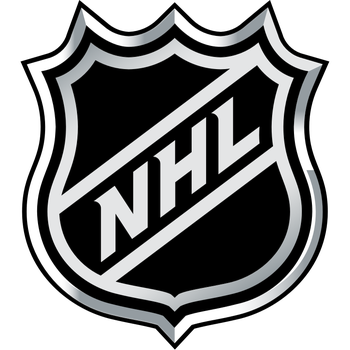10 MINS AGO • NHL.COM

NHL 6 GAMES yesterday
6 GAMES yesterday
MacKinnon sets Avalanche franchise season scoring mark in win against Oilers | NHL.com Has 2 assists to pass Stastny; McDavid, Draisaitl scratched for Edmonton
Golden Knights lose to Ducks, could've clinched 3rd in Pacific | NHL.com Vatrano has hat trick, Gauthier gets assist in NHL debut for Anaheim
10 MINS AGO • NHL.COM
Vatrano's hat trick sends the Ducks to a 4-1 win over the Golden Knights
Frank Vatrano scored three goals and the Anaheim Ducks ended their season on a high note, defeating the playoff-bound Vegas Golden Knights 4-111 MINS AGO • ASSOCIATED PRESS
Golden Knights suffer stunning loss to Ducks in regular-season finale The Anaheim Ducks shocked the Golden Knights 4-1 Thursday night at T-Mobile Arena, snapping a three-game winning streak for the latter and s...
12 MINS AGO • LASVEGASSUN.COM
POST-RAW | Kris Knoblauch 04.18.24
20 MINS AGO • YOUTUBE
Say What - 'I'll Never Forget That' | Calgary Flames The buzz following the Flames' 5-1 win over the Sharks Thursday
21 MINS AGO • NHL.COM
Andersson On The Desk - 18.04.24 | Calgary Flames "You want to put on a show (for the fans)"
21 MINS AGO • NHL.COM
Postgame Coleman - 18.04.24 | Calgary Flames "A nice way to end what I think of as a tough year"
21 MINS AGO • NHL.COM
Postgame Klapka - 18.04.24 | Calgary Flames "It's amazing. I’ll never forget about that"
21 MINS AGO • NHL.COM
Postgame Weegar - 18.04.24 | Calgary Flames "It’s pretty cool, pretty awesome, special feeling"
21 MINS AGO • NHL.COM
Go Inside The Room - 18.04.24 | Calgary Flames Backs hands out some important game pucks
21 MINS AGO • NHL.COM
Thank You, C of Red! | Calgary Flames Flames end season with milestone-filled victory over Sharks on Fan Appreciation Night
21 MINS AGO • NHL.COM
Edmonton Oilers win big in loss to Colorado Oilers get through meaningless regular season finale in one piece
25 MINS AGO • EDMONTONJOURNAL.COM
Brossoit | 24.04.18 | Winnipeg Jets Laurent Brossoit sits down with Sara Orlesky postgame
27 MINS AGO • NHL.COM
Jacket Pres | 24.04.18 | Winnipeg Jets Nikita Chibrikov & Brad Lambert earn the jackets!
27 MINS AGO • NHL.COM
GAME RECAP: Avalanche 5, Oilers 1 | Edmonton Oilers Edmonton wraps up their regular season with a 5-1 defeat to the Avalanche on Thursday
27 MINS AGO • NHL.COM
HIGHLIGHTS | COL 5, EDM 1 | Edmonton Oilers Watch the recap of Thursday's Oilers vs. Avalanche season finale
27 MINS AGO • NHL.COM
Oilers @ Avalanche 4/18 | NHL Highlights 2024
34 MINS AGO • YOUTUBE
NHL Highlights | Oilers vs. Avalanche - April 18, 2024
40 MINS AGO • YOUTUBE
MacKinnon has 2 assists, breaks franchise's single-season points mark as Avs beat Oilers 5-1
Valeri Nichushkin scored twice, Nathan MacKinnon added two assists to break the franchise’s single-season points mark and the Colorado Avalanche cruise into the playoffs behind a 5...45 MINS AGO • ASSOCIATED PRESS
Flames beat NHL-worst Sharks 5-1 in the season finale for the non-playoff teams
Blake Coleman scored his 30th goal and MacKenzie Weegar netted his 20th as the Calgary Flames beat the San Jose Sharks 5-1 on Thursday night in the season-ending game for both team...47 MINS AGO • ASSOCIATED PRESS
Coleman scores 30th for Flames in win against Sharks | NHL.com Forward also has assist for Calgary; Zetterlund gets goal for San Jose
47 MINS AGO • NHL.COM
Recap: Flames vs. Sharks 18.04.24 | Calgary Flames Check out all the highlights from Thursday night's season-ending game
59 MINS AGO • NHL.COM
Flames Assign Four Players To Wranglers | Calgary Flames Wranglers wrap up regular season in Abbotsford this week
59 MINS AGO • NHL.COM
Lambert | 24.04.18 | Winnipeg Jets Brad Lambert on his NHL debut
1 HOUR AGO • NHL.COM